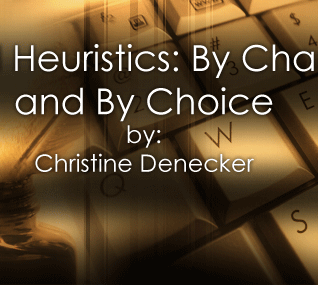


|
Bishop, W. (1999). Ethnographic Writing Research. Portsmouth, NH: Boynton/Cook. Bogdan, R. & Biklen, S.K. Qualitative Research for Education: An Introduction to Theory and Methods. Boston: Allyn & Bacon. Bolter, J.D. & Grusin, R. (2000). Remediation: Understanding New Media. Cambridge: The MIT Press. Brandt, D. (1995). Accumulating Literacy: Writing and Learning to Write in the Twentieth Century. College English, 57(6), 649-667. Cope, B. & Kalantizis, M. (Eds.). (2000). Multiliteracies: Literacy learning and the design of social futures. New York: Routledge. Crowley, S. & Hawhee, D. (2003). Ancient Rhetorics for Contemporary Students. New York: Longman. Daley, E. (2003). Expanding the Concept of Literacy. EDUCAUSE Review, 33-40. Dunn, P. (2001). Talking, Sketching, Moving: Multiple Literacies in the Teaching of Writing. Portsmouth, NH: Heinemann. Emig, J. (1977). Writing as a Mode of Learning. In V. Villanueva, Jr. (Ed.), Cross-Talk in Comp Theory.(pp. 7-16). Urbana, IL: NCTE. Gardner, H. (2006). Multiple Intelligences: New Horizons. New York: Basic Books. Hawisher, G., LeBlanc, P., Moran, C., & Selfe, C. (1996). Computers and the Teaching of Writing in American Higher Education. Norwood, NJ: Abex Publishing. Hertz, R. (1997). Reflexivity and Voice. Thousand Oaks, CA: Sage. Hess, M. (2007). Composing Multimodal Assignments. In C. Selfe (Ed.) Multimodal Composition: Resources for Teachers. (pp. 29-37).Cresskill, NJ: Hampton Press. Jewitt, C. & Kress, G. (Eds.). (2003). Multimodal Literacy. New York: Peter Lang. Johanek, C. (2000). Composing Research: A Contextualist Paradigm for Rhetoric and Composition. Logan, Utah: Utah State University Press. Kress, G. (2003). Genres and the Multimodal Production of ‘Scientificness.’ In C. Jewett & G. Kress (Eds.), Multimodal Literacy. (pp. 173-186).New York: Peter Lang. Kress, G. & van Leeuwen, T. (1996). Reading Images: The Grammar of Visual Design.New York: Routledge. Odell, L. and Katz, S.M. (2006). Writing in a Visual Age. New York: Bedford/St. Martin’s. Pahl, K. (2003). Children’s Text-Making at Home: Transforming Meaning Across Modes. In C. Jewett & G. Kress (Eds.), Multimodal Literacy. (pp.139-154). New York: Peter Lang. Porter, J. (1996). Intertextuality and the Discourse Community. In M. Wiley, B. Gleason,& L.W. Phelps (Eds.), Composition in Four Keys: Inquiring into the Field. Mountain View, CA: Mayfield. Selfe, C. (Ed.) (2007). Multimodal Composition: Resources for Teachers. Cresskill, NJ: Hampton Press. Selfe, C. (1999). Technology and Literacy in the 21st Century: The Importance of Paying Attention. Carbondale: Southern Illinois University Press. Selfe, C. & Hilligoss, S. (Eds.). (1994). Literacy and Computers:The Complications of Teaching and Learning with Technology. New York: MLA. Selfe, R. & Selfe, C. (2008). “Convince me!” Valuing Multimodal Literacies and Composing Public Service Announcements. Theory into Practice, 47, 83-92. Smith, C.F. (1994). Hypertextual Thinking. In C. Selfe & S. Hilligoss (Eds.), Literacy and Computers:The Complications of Teaching and Learning withTechnology. (pp. 264-281). New York: MLA. Stein, P. (2003). The Olifansvlei Fresh Stories Project: Multimodality, Creativity and Fixing the Semiotic Chain. In C. Jewett & G. Kress (Eds.), Multimodal Literacy. (pp. 123-138). New York: Peter Lang. Takayoshi, P. & Selfe, C. (2007). Thinking about Multimodality. In C. Selfe (Ed.), Multimodal Composition: Resources for Teachers. (pp. 1-12). Walter, P. (1999). Defining literacy and its consequences in the developing world. International Journal of Lifelong Education, 18(1), 30-48. Yancey, K.B. (2004). Made Not Only in Words: Composition in a New Key. College Composition and Communication, 56(2), 297-328. Zeni, J. (1994). Literacy, Technology, and Teacher Education. In C. Selfe & S. Hilligoss (Eds.), Literacy And Computers: The Complications of Teaching and Learning with Technology. (pp. 76-86).New York: MLA.
|